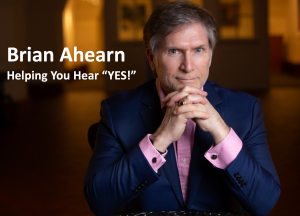Influencers from Around the World – Hardwired Humans
Influencers from Around the World guest post comes from Anthony McLean,
Australia’s one and only Cialdini Method
Certified Trainer (CMCT®). We owe Anthony special
thanks for taking time to share with us because his busy schedule last month included
a trip to the States to meet with Dr. Cialdini. I know you’ll enjoy what
Anthony has to share.
Chief Influence Officer
influencePEOPLE
Helping You Learn to Hear “Yes”.
a Global Healthcare company like Philips undertake a change management program in
a zoo? The answer is they were following research revealed in Andrew O’Keefe’s book
Hardwired Humans.
Australia/New Zealand, Philips had undergone four change programs in as many
years preceding the unexpected global change program announced in 2009. Managing
director Harry van Dyk and HR director Jo Hilyard admitted the company was
suffering from “change fatigue” and a vastly different approach was required to
that used previously.
happened next was a little unexpected for many. Philips took 30 of its leaders
to Taronga Zoo in Sydney for a workshop that introduced them to the role basic
human instincts play in the workplace. The workshop looked at nine hardwired
instincts of humans and the leadership implications including the management of
change. In one part of the program the leaders were addressed by The Jane Goodall Institute and its chimpanzee program to demonstrate the social and
hierarchical structure off chimpanzees and the implications this has for modern
business. Unexpectedly for the participants they discovered the comparisons
between chimp and human social structures were numerous and provided a whole
new perspective on resolving workplace challenges.
the key insights was that the conventional wisdom that claims people resist
change is wrong. We learned that humans, rather than being resistant to change,
are actually hardwired to avoid loss. Upon hearing about a change people
instantly screen their environment for the risk of loss. If we detect loss, we
resist the change. If we detect gain, we support the change. If we are unsure
about the impact of the change (and this is the big swinger), then we assume
loss. This means that for organizational change we often have people
unnecessarily erring toward loss and resistance, merely because people were
unable to make sense of the impact of the change for them at the moment they
first learned of it. (HR Monthly,
March 2011, p30)
for persuaders are clear. Through scarcity, we know that loss framing
is more persuasive than focusing on the benefits of a thing. The final part of
the above quote is very important because it highlights that under conditions in
which the risk cannot be assessed the subject will assume loss if they have no
other means to assess the risk.
say great, scarcity is at play without you having to do anything to get people
to take action. In reality the targets of influence, under this assumed loss,
will employ coping mechanisms and strategies to protect themselves from that
loss rather than take healthy proactive workplace behaviours.
in a change management project if the targets of influence assume loss because
they have no other basis to assess the risk, they will then react against the
project, at times for no other reason than they associate loss (i.e., of
position, status, pay, etc.) with the project itself.
who has managed a change project will tell you the reluctance at times seems
unnecessary and ill informed; now you understand that it is a hardwired
response to the subjects’ inability to assess risk, so they assume loss and
react accordingly.
know that people scan for loss in any situation before moving forward, it makes
sense to manage this situation and brief the relevant staff fully on managing
the default towards loss and reacting against the situation unnecessarily. By
providing this briefing it is more likely to trigger reciprocity because you as the
change agent have given them the information they require to assess the risk
for themselves. Potentially it may even increase liking if you are then
required to work together and you have already opened up the channel for
cooperation. The warning however is, that left unattended to the development of
a loss aversion mindset, this reaction may cause the audience to take a stand
and trigger consistency, towards the negative
and this could be all the momentum that is required to drive consensus in the wrong direction.
yourself these questions:
of influence are unable to assess the personal risk of loss for themselves
(i.e., the risk is not clear or able to be easily understood), they will most
likely assume loss and react against you and your project, service or request.
targets of influence appropriately so they can adequately assess the
risk from an informed position and give yourself every chance of success
rather than having to start the influence process on the back foot. It may also
be prudent to lobby support from others who already understand the project and
during the briefing ask them to discuss the implications for their business area
and support for the change. This simple step uses consensus to show others are
already moving in the direction of the project not away from it and as we know
when we are unsure of what we should do we look to the behaviour of others like
us to guide our decisions.
Zoo, HR Monthly March 2011 p28-30
A (2011) Hardwired Humans Roundtable
Press.














